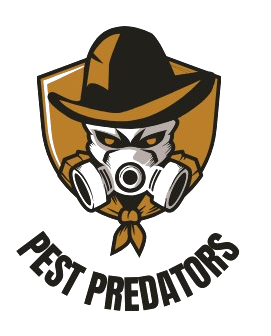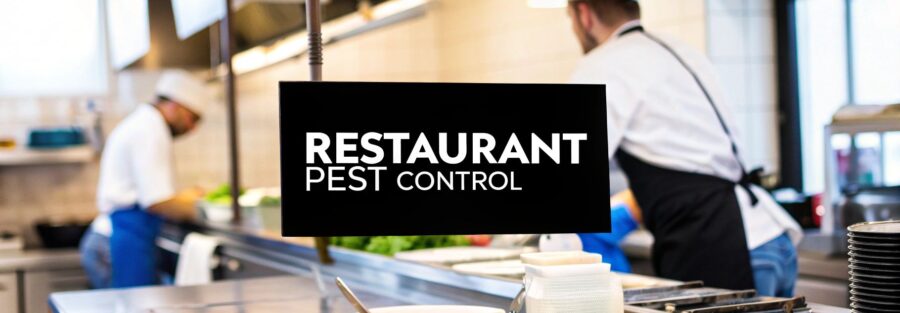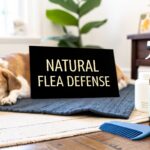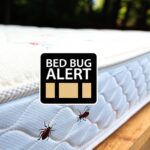When it comes to running a restaurant, a single pest sighting can be the beginning of the end. It’s not just about getting rid of pests when you see them; it’s about making pest control a fundamental part of your business strategy. Think of it less as a reactive cost and more as an essential investment in your restaurant's survival. One bad review, one failed health inspection, and the brand you’ve worked so hard to build can be permanently tarnished.
Why Pest Control Is Critical for Your Restaurant's Survival
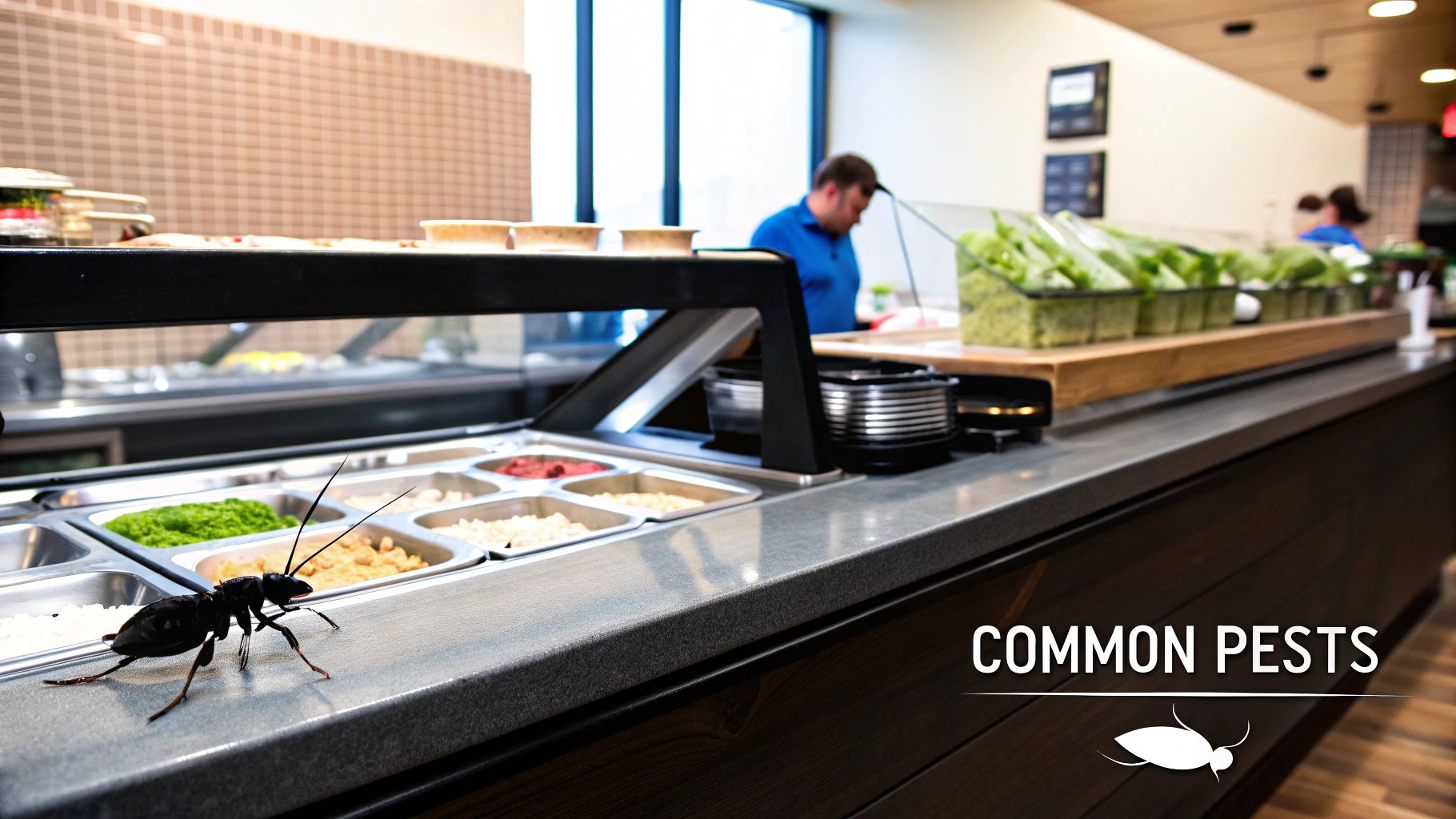
In the hyper-competitive UK food scene, your reputation is everything. You can pour your heart into crafting the perfect menu and creating an incredible atmosphere, but a silent, six-legged threat could be undoing all that good work behind the scenes. Pests aren't just a hygiene issue—they're a direct threat to your restaurant's very existence.
I've seen it happen. A popular city-centre bistro had a customer snap a photo of a cockroach scuttling near their table. That picture hit social media and went viral within hours. The result? An avalanche of cancelled bookings, a torrent of one-star reviews, and a surprise visit from the local environmental health officer. The financial hit was catastrophic, and rebuilding that lost trust took years.
The Unbreakable Link Between Pests and Profitability
This isn't just a story of bad luck; it’s a clear demonstration of cause and effect. Letting pest control slide directly impacts the very things that keep your doors open.
- Reputational Damage: In the age of TripAdvisor and Google Reviews, a single pest sighting can be broadcast to thousands of potential diners, creating a negative image that’s incredibly difficult to shake off.
- Legal Consequences: A pest infestation is a major breach of UK food safety laws. This can lead to crippling fines, forced closures, and even legal action from customers who become ill.
- Financial Losses: On top of the fines, you’re looking at the cost of throwing out spoiled stock, shutting down for deep cleaning, and the long-term revenue drop from customers who simply won't come back.
The stakes, both financially and reputationally, are far too high to leave things to chance.
"Treating pest control as a non-essential expense is one of the most dangerous gambles a restaurant owner can make. It should be viewed as a core operational investment, as vital as your ingredients or your staff."
Protecting Your Food Hygiene Rating
Your Food Standards Agency (FSA) hygiene rating is your public promise of quality and safety. Displayed on your door and online, it's often the first thing a potential customer checks. Pest control is a massive part of that score, which ranges from 0 (urgent improvement necessary) to 5 (very good).
Even something seemingly minor, like finding rodent droppings in a stockroom, can plummet your rating overnight. That drop can scare off more than half of your potential customers who rely on these scores to decide where to eat. You can explore more about how pests can impact your restaurant's hygiene rating and what to do about it.
To help illustrate the severity of these threats, let's break down the common culprits and the specific damage they can do.
Pest Risks and Their Impact on Restaurant Operations
| Pest Type | Primary Risks | Potential Business Impact |
|---|---|---|
| Rodents (Rats & Mice) | Contamination (Salmonella, E. coli), gnawing on wiring (fire hazard), structural damage. | Forced closure, fines from health inspectors, stock loss, reputational ruin. |
| Cockroaches | Spreading diseases (dysentery, gastroenteritis), triggering allergies, rapid breeding. | Immediate hygiene rating drop, negative social media exposure, loss of customer trust. |
| Flies (Houseflies, Fruit Flies) | Transmitting pathogens by landing on food and surfaces, indicating poor sanitation. | Customer complaints, perception of uncleanliness, contamination of prepared food. |
| Stored Product Insects (SPIs) | Infesting and ruining dry goods like flour, grain, and spices. | Significant financial loss from discarded inventory, potential for brand-wide recalls. |
This table shows it's not just about one type of pest; it's a multi-front battle where the consequences of failure are severe.
Ultimately, robust pest control for restaurants isn’t about managing a nuisance. It’s about protecting your brand, staying compliant with the law, and securing the customer trust that keeps people coming back, time and time again.
Spotting the Unwanted Guests in Your Kitchen
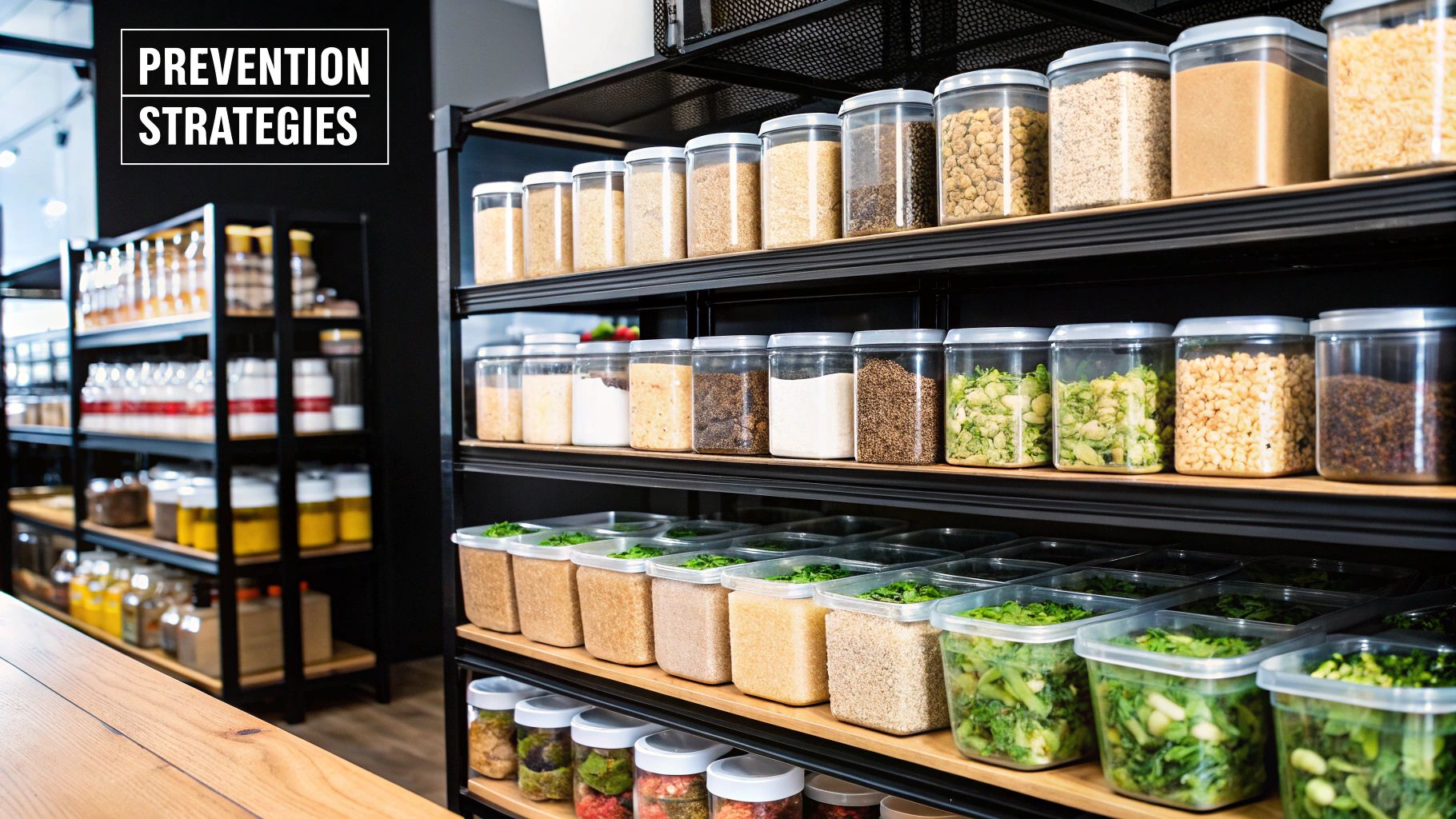
To win the battle against pests, you have to learn to think like them. A truly effective pest control strategy doesn't start with traps or chemicals—it starts with sharp, consistent observation. Catching the first subtle signs of an infestation is the difference between a small problem and a full-blown crisis that could put your reputation on the line.
This means looking beyond the obvious. Anyone can spot droppings, but a pro knows to hunt for the faintest clues that tell a much bigger story. It’s all about training your team (and yourself) to see your kitchen through the eyes of a creature constantly searching for food, water, and a place to hide.
Learning the Language of an Infestation
Long before you see a pest scuttling across the floor, they leave a trail of evidence. Recognising these signs means using all your senses—sight, smell, and even noticing changes in textures.
For instance, that faint, oily or musty smell in a dark, warm cupboard isn’t just damp. It's a classic sign of a hidden cockroach nest. Likewise, finding small, greasy smear marks along skirting boards or pipework is a dead giveaway that rodents are using it as a regular motorway.
"The first sign of a pest problem is rarely the pest itself. It's the small, seemingly insignificant details that tell the real story—a frayed edge on a sack of flour, a strange smell near the fridge compressor, or a single discarded insect wing on a windowsill."
By the time you see a pest during service, the infestation is probably already well-established. Early detection is your most powerful weapon.
Your Kitchen Vulnerability Audit Checklist
Make a regular 'vulnerability audit' part of your weekly routine to spot weak points before pests do. Get your team involved and arm them with this checklist.
- Unusual Odours: Sniff around for musty, oily, or ammonia-like smells, paying close attention to motors, drains, and storage areas.
- Droppings and Smears: Look for small, dark droppings (like black rice for mice, larger for rats) in cupboards, along walls, and behind equipment. Also, keep an eye out for greasy rub marks.
- Gnaw Marks: Check packaging, silicone sealant, woodwork, and even electrical wiring for small bite marks. Remember, rodents will chew through almost anything.
- Nesting Materials: Be on the lookout for shredded paper, cardboard, or fabric tucked away in quiet corners—a sure sign rodents are building a home.
- Damage to Structures: Find any small holes in walls or floors, especially around utility pipes? Check for damaged stock in your storeroom, too.
- Live or Dead Pests: Finding dead insects, like cockroaches or beetles, on floors or windowsills is a clear sign there’s a much larger population nearby.
Focusing on Pest Hotspots
Pests are creatures of habit. They’re drawn to specific areas in a restaurant that give them everything they need to thrive. If you want to be effective, you need to prioritise your inspections in these 'hotspots'.
1. Delivery and Storage Areas
Incoming goods are a primary entry point for pests. Cardboard boxes from suppliers can easily harbour cockroach eggs. Always inspect deliveries carefully before they even enter the main kitchen and break down boxes for recycling straight away.
2. Beneath and Behind Equipment
The warm, dark, and often undisturbed spaces behind refrigerators, cookers, and dishwashers are perfect breeding grounds. It's where crumbs and moisture gather, creating an ideal habitat for cockroaches and rodents.
3. Waste Disposal Areas
Your bins are a five-star hotel for pests. Make sure internal bins have tight-fitting lids and are emptied constantly. Your external bins should be kept away from the building on a hard, cleanable surface, and always kept shut.
Rodents are a particularly persistent challenge for UK restaurants. In fact, they remain the most significant issue, with studies showing that over 70% of professional pest control call-outs to food businesses are for rodent infestations. They don't just contaminate food with droppings and urine; they can spread diseases like leptospirosis, posing a serious food safety risk that can lead to swift action from local councils.
While rodents and cockroaches get most of the attention, flying insects bring their own problems. Wasps, for example, can become a major nuisance in outdoor seating areas during summer. To understand when it’s time to call in the experts, it's useful to know the difference between common stinging insects. For more detail, check out our guide on wasps and bees and when to call the pros. Being vigilant against all types of pests is crucial for a complete defence.
Building a Practical Pest Management Plan
An Integrated Pest Management (IPM) plan might sound like complicated industry jargon, but it’s the bedrock of effective, long-term pest control for restaurants. Forget thinking of it as a one-off fix. It's a continuous cycle of observation, prevention, and targeted action. A solid IPM plan is a living document that guides your team, protects your reputation, and proves you’re serious about food safety.
Putting a plan on paper forces you to shift from a reactive "see a pest, call for help" mindset to a proactive one. It’s about digging into why pests are drawn to your restaurant in the first place and then systematically taking away their reasons to stick around. This approach isn't just more effective—it's more sustainable and often much kinder to your budget over time.
Starting with Routine Inspections
The engine of any good IPM plan is a consistent, thorough inspection routine. This isn’t something you leave to chance. It needs to be scheduled, documented, and put in the hands of specific team members. Your staff are your eyes and ears on the ground, and training them on what to look for is your first and best line of defence.
Your inspection checklist should be tailored to your building, zeroing in on known pest ‘hotspots’ that offer food, water, and shelter.
- Dry Storage Areas: Look for tell-tale signs like damaged packaging, the webbing left by stored product insects, or droppings behind shelving units.
- Beneath Cooking Equipment: The combination of warmth and unavoidable food debris makes these spots a five-star hotel for cockroaches and rodents.
- Bar and Service Stations: Always inspect floor drains for organic build-up and check sticky beverage lines for sugary spills that flies love.
- Waste Management Zones: Your internal bins and external dumpsters need daily checks for overflow, spillage, and any signs of pest activity.
This visual highlights just how crucial basic cleaning protocols are in stopping pest issues before they even start.
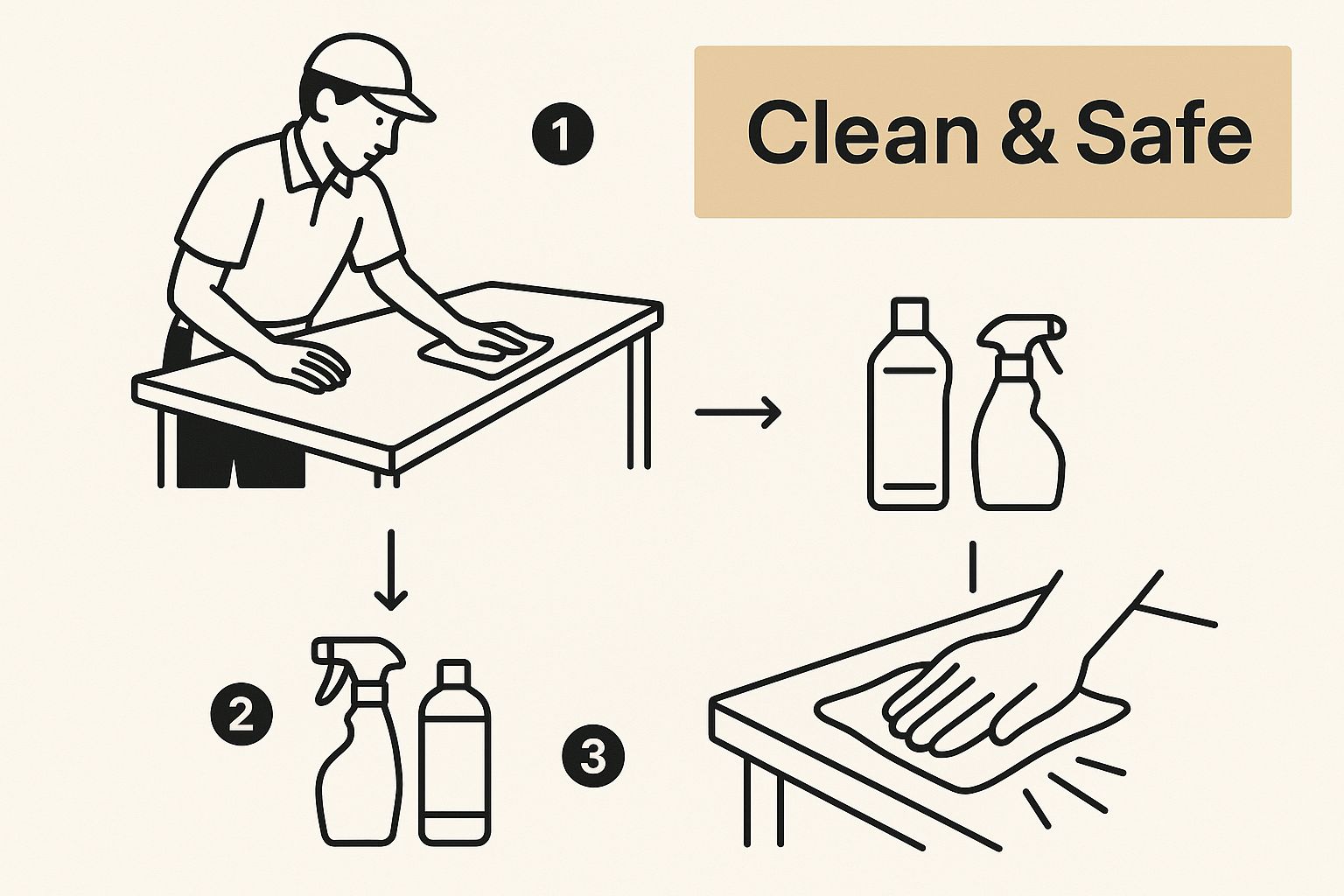
It’s a simple truth: a clean, well-maintained environment is the last place a pest wants to be. That makes sanitation the absolute cornerstone of prevention.
The Hierarchy of Control Measures
So, you've spotted a potential issue. Your IPM plan is what tells you how to respond. The goal is always to use the least invasive and lowest-risk method first, only escalating when absolutely necessary. We call this the hierarchy of control.
- Cultural and Sanitation Controls: This is where you always start. It’s all about changing your environment and daily habits to make your restaurant inhospitable to pests. Think rigorous cleaning schedules, proper food storage in sealed containers, and an efficient waste management system.
- Physical and Mechanical Controls: If good housekeeping isn't quite enough, the next step is to physically block pests out. This means fitting bristle strips to the bottom of doors, sealing cracks in walls with rodent-proof fillers like wire wool, and installing fly screens on windows. It also includes using tools like sticky boards or snap traps to monitor and catch pests.
- Chemical Controls: This should always be the last resort. When pesticides are needed, they must be applied by a qualified professional who knows which products are safe for a food environment and how to use them with minimal risk to staff and customers.
A well-executed IPM plan puts prevention miles ahead of reaction. Sealing a small hole in a wall is always better, safer, and cheaper than dealing with the rodent infestation that hole eventually lets in.
From Prevention to Action
Your plan must spell out exactly what to do the moment a pest is found. This takes the panic out of the situation and ensures a consistent, documented response every time. For instance, if a staff member finds rodent droppings during their morning checks, the plan should tell them precisely who to report it to and what happens next.
This systematic approach is becoming more vital than ever in the UK. The market for restaurant pest control is growing, pushed by government mandates for tougher hygiene in the food service sector. Projections show a Compound Annual Growth Rate (CAGR) of around 5-6% between 2025 and 2033, mostly because more restaurants are adopting IPM to cut down on pesticide use and improve safety.
A crucial part of your action plan is knowing when a problem is too big for your team to handle. While daily vigilance is key, some infestations need immediate professional help. Having a trusted pest control partner on standby is non-negotiable. If you find a major infestation, like a wasp nest near your outdoor seating or clear evidence of a large rodent population, you have to act fast. In these moments, knowing your options for emergency pest control services can save you from costly downtime and a damaged reputation.
Documenting Everything for Compliance
Finally, remember that your IPM plan is a critical compliance document. Every inspection, every sighting, and every action taken must be logged. This creates a detailed paper trail that proves your due diligence to health inspectors.
Your logbook should capture:
- Dates and times of routine inspections.
- The name of the staff member who did the check.
- Any signs of pest activity noted (droppings, gnaw marks, etc.).
- Corrective actions taken (e.g., "Cleaned spill under fryer," "Sealed gap around pipe").
- Details of any professional treatments, including dates and substances used.
This documentation doesn't just keep you on the right side of the law. It helps you spot patterns over time, letting you fine-tune your pest management plan for even better results. It turns your hard work into a measurable, defensible strategy for protecting your business.
Making Your Restaurant a Pest-Proof Fortress
A solid pest management plan is your roadmap, but it’s the daily, practical actions that turn that plan into a reality. The most effective pest control for restaurants isn’t about frantically reacting to a problem; it’s about creating an environment so unwelcoming that pests don’t even bother trying.
This means going beyond a quick wipe-down and building a true fortress against unwanted guests. Your best defence is making your restaurant a terrible place for pests to find the big three: food, water, and shelter. Think of it as denying them the basic resources they need to survive, let alone thrive.
Deep Sanitation Beyond the Basics
A quick clean of the surfaces you can see just won’t cut it. Pests are absolute masters at finding sustenance in the places you might overlook. A genuinely pest-proof kitchen demands a focus on deep sanitation that gets rid of those hidden food sources.
For example, that greasy build-up behind your cooking line? It’s a five-star meal for cockroaches and flies. Regularly degreasing extractor fans and the walls behind your equipment is crucial. And don't forget the floor drains – they can quickly fill with organic gunk, creating the perfect breeding ground for drain flies. A weekly flush with a good biological drain cleaner can work wonders.
An entire infestation can kick off from something as simple as a few crumbs left under a prep table or a sticky patch of spilt syrup behind the bar. Diligence is everything.
To build a routine that actually works, zero in on these key areas:
- Underneath and Behind Equipment: Make it a weekly job to pull out fridges, ovens, and other large appliances to clean the floors and walls behind them.
- Storage Shelving: Once a month, completely empty and sanitise the shelves in your dry store. This removes dust, crumbs, and any potential insect eggs.
- Bar Areas: Pay close attention to your beverage stations. Drip trays and nozzles need cleaning daily to prevent the sugary build-up that ants and flies love.
This level of detail sends a very clear message to pests: there’s nothing for you here.
Mastering Structural Exclusion
Even the cleanest kitchen in the world is vulnerable if pests can just stroll in through a gap in the wall. Structural exclusion is the simple, effective practice of physically sealing up your building to deny them entry. It's often a one-time fix that delivers long-term protection.
Mice can squeeze through a hole the size of a biro, and rats only need a gap the width of your thumb. Start by doing a thorough walk-around of your building's exterior. Look for any potential entry points around pipes, utility lines, and air bricks.
Don't just plug these gaps with any old filler, though. Rodents will chew straight through expanding foam and silicone. You need to use tough, rodent-proof materials like wire wool packed tightly with sealant, or specialised metal mesh. For bigger openings, it's worth getting a professional repair done.
Here are a few critical exclusion tactics to put in place:
- Door Sweeps: Fit heavy-duty bristle or rubber sweeps to the bottom of all external doors. Make sure they fit snugly against the floor to stop rodents from slipping underneath.
- Window and Vent Screens: Install fine-gauge mesh over any windows you open for ventilation and on all your air bricks. This lets the air in but keeps flies and other flying insects out.
- Pipe and Cable Entry Points: Seal the gaps around any pipes or cables entering the building. A combination of wire wool and strong cement or sealant is your best bet.
These physical barriers are a non-negotiable part of professional pest control for any serious restaurant.
Smarter Waste Management Strategies
Your bins out back can act like a giant, flashing neon sign for pests, drawing them to your property from all over the area. How you manage your waste is just as important as how you clean your kitchen. The goal here is to make your rubbish area as unappealing as possible.
Start with the bins themselves. They absolutely must have tight-fitting, lockable lids that stay closed. If a lid is broken or goes missing, get it replaced immediately. A single open bin can support a huge population of rats and flies.
Where you keep your bins also matters. If you can, place them away from the building on a hard, cleanable surface like concrete. This makes it harder for pests to journey from the bins into your kitchen and makes cleaning up any spills a much easier job.
Put a strict waste routine into practice:
- Use Strong Bin Liners: Double-bag your waste if you need to. This helps prevent leaks that create odours and attract pests.
- Regular Collection: Make sure your waste is collected often enough that bins never have the chance to overflow.
- Cleanliness is Key: Schedule a regular professional clean for your external bins to get rid of residue and nasty smells.
Combine meticulous sanitation with robust structural barriers and smart waste management, and you’ll transform your restaurant from an easy target into a fortified stronghold.
How to Choose the Right Pest Control Partner
Even the most rigorous in-house cleaning schedule can’t always keep pests at bay. That’s why professional backup isn’t just a good idea—it’s a non-negotiable part of running a successful restaurant. The goal is to find a genuine partner, someone who understands the stakes, not just a contractor who shows up, sprays, and disappears.
Your relationship with a pest control company should be a collaboration. It needs to be built on trust, clear communication, and a shared commitment to protecting your business.
Think of it as an investment. A low-cost provider might deal with an immediate problem, but a true partner helps you prevent future ones, safeguards your Food Hygiene Rating, and provides the rock-solid documentation you need to prove your due diligence. This is about your restaurant's long-term health and reputation.
Vetting Potential Pest Control Companies
Before you even pick up the phone for a consultation, a bit of homework can save you a world of trouble. The first thing to check is their professional standing. In the UK, membership with the British Pest Control Association (BPCA) is the gold standard. It’s your assurance that they follow strict codes of practice, are fully insured, and only employ properly qualified technicians.
Next, look for a company that specialises in the food and hospitality sector. A team that mostly handles residential call-outs won’t have the same grasp of the specific legal and hygiene standards a commercial kitchen must meet. Don’t be shy about asking for references from other local restaurants—and actually call them. A reputable company will be more than happy to share their success stories.
"A great pest control technician becomes an extension of your team. They understand your operations, anticipate seasonal risks, and provide proactive advice that saves you money and stress down the line."
Questions to Ask During the Consultation
The initial consultation is your interview. It's where you find out if their approach is a good fit for your restaurant and separate the real experts from the rest.
Go in prepared with a list of specific questions:
- What’s your approach to Integrated Pest Management (IPM)? You want to hear them talk about prevention and monitoring first, with chemical treatments used only as a last resort.
- What kind of documentation and reporting will I receive? They must provide a detailed logbook. This should track every visit, all findings, any treatments used, and clear recommendations for your compliance records.
- Will I have a dedicated technician? Consistency is key. When the same person services your restaurant, they get to know its unique layout, challenges, and potential trouble spots.
- What’s your emergency response time? Pests don’t stick to a 9-to-5 schedule. You need to know how quickly they can get to you if a major issue pops up outside of a planned visit.
Remember, this meeting is a two-way street. A good provider will ask you just as many questions about your cleaning schedules, staff training, and supplier protocols.
Deciding between handling things yourself and calling in the experts can be tough. Here’s a quick breakdown to help you weigh the options.
Comparing In-House vs. Professional Pest Control
| Aspect | In-House Management | Professional Service |
|---|---|---|
| Responsibility | Your staff handles monitoring, baiting, and record-keeping. | A dedicated, certified technician manages all aspects of pest control. |
| Expertise | Limited to general knowledge; may misidentify pests or use incorrect treatments. | Access to expert knowledge of pest behaviour, biology, and up-to-date treatment methods. |
| Effectiveness | Often only addresses visible pests, missing the source of the infestation. | A strategic, preventative approach that targets the entire pest life cycle and entry points. |
| Compliance | Risk of incomplete or non-compliant documentation for health inspections. | Provides detailed, audit-ready reports and logbooks to prove due diligence. |
| Cost | Lower upfront cost for supplies, but can lead to higher costs from failed treatments or fines. | Higher initial investment but offers better long-term value by preventing infestations and protecting your reputation. |
| Tools & Chemicals | Limited to off-the-shelf products, which may be less effective or improperly used. | Access to professional-grade, restricted-use products that are safer and more effective when applied by a pro. |
While in-house efforts are crucial for daily sanitation, a professional service provides the expertise and accountability needed to truly protect your business.
Building a Collaborative Relationship
Once you’ve chosen a partner, the real work begins. To get the best results, you need to work with your technician. Be open and share information about any staff sightings or potential issues you’ve noticed between visits. The more they know, the more effective they can be.
Make sure they have clear, easy access to all necessary areas—storage rooms, basements, and behind bulky equipment. If they make a recommendation, like sealing a gap under a door or adjusting your waste storage routine, act on it quickly.
This proactive teamwork is the real secret to a pest-free establishment. Exploring the full range of professional pest control services available can give you a clearer picture of how a partnership can protect your business from every angle.
Your Top Restaurant Pest Control Questions, Answered
Running a restaurant means you’re spinning a lot of plates at once. When it comes to something as critical as pest control, it’s only natural to have questions. We get calls from restaurateurs all the time, so we’ve put together straight answers to the queries that come up most often.
What Are My Legal Responsibilities for Pest Control?
In the UK, the law is refreshingly black and white on this. Under the Food Safety Act 1990, you are legally required to keep your premises in good repair and free from pests. This isn't a "nice-to-have"; it's a core pillar of food hygiene legislation.
More importantly, you need to prove due diligence. This means having a documented, proactive pest management system in place. Simply waiting for a problem to appear before you act won't cut it and can land you in serious trouble with Environmental Health Officers, from massive fines to a forced shutdown.
How Often Should I Schedule Professional Pest Control Visits?
There’s no one-size-fits-all answer here, as the right schedule really depends on your specific situation. Things like your restaurant's location (a busy city centre vs. a rural spot), the age of your building, and even the type of food you serve all come into play.
That said, a solid starting point for most restaurants is a monthly or bi-monthly professional service contract. For high-risk spots, like older buildings in dense urban areas, monthly visits are definitely the way to go. These regular check-ins allow a technician to keep an eye on activity, maintain bait stations, spot potential entry points, and give you the consistent paperwork you need to stay compliant.
A proactive, scheduled service is far more cost-effective than dealing with the fallout from an unexpected infestation. Think of it as insurance for your reputation.
Can I Handle Pest Control Myself to Save Money?
While your team’s daily cleaning and basic proofing are absolutely vital, trying to manage a full pest control strategy on your own is a huge gamble. The products you can buy off the shelf just don't pack the same punch as professional-grade solutions. Worse, using amateur pesticides incorrectly in a food prep area could lead to contamination and serious legal issues.
Think about it this way:
- Expertise: A pro can identify the exact pest you're dealing with, find where it's coming from, and understand its lifecycle. That's the key to getting rid of it for good.
- Safety: Technicians are trained to apply treatments safely in sensitive areas like kitchens, protecting your staff, customers, and stock.
- Documentation: A professional service provides the detailed reports an Environmental Health Officer will demand during an inspection. This paperwork is your proof that you’re doing everything by the book.
What Should I Do if a Customer Reports Seeing a Pest?
The moment a customer spots a pest, how you respond can make or break the situation. Your goal is to manage their experience and contain any reputational damage.
- Act Immediately and Apologise: Approach the customer with genuine empathy. Listen to their concern, apologise sincerely, and offer to move them to a different table. Comping their meal is often a small price to pay for goodwill.
- Investigate Discreetly: Have a manager quietly check the area. You need to confirm the sighting and remove any evidence without making a scene and alerting other diners.
- Document the Incident: Make a detailed note in your pest control logbook. Include the date, time, location, and what kind of pest was seen.
- Contact Your Pest Control Partner: Call your professional service right away. An emergency call-out shows you're taking the problem seriously and gets an expert on-site to assess the situation and start treatment.
Navigating the world of pest management is essential to your restaurant's survival and success. For a scientific, evidence-based approach that protects your business from the ground up, trust the experts at Pest Predators Limited. Our tailored solutions and proactive strategies ensure your establishment remains compliant, safe, and pest-free. https://www.pestpredatorslimited.co.uk
